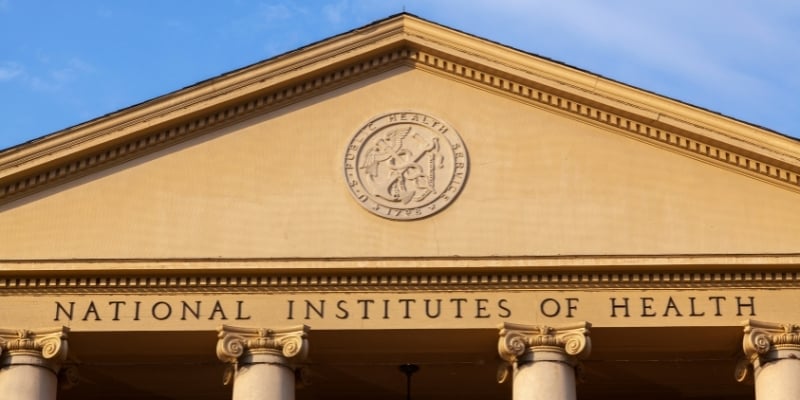It takes four hours and 20 minutes for Jenn Leiferman, PhD, and Jini Puma, PhD, to drive to the San Luis Valley from central Denver. When faculty and staff from the Colorado School of Public Health get to this rural community in Southern Colorado, they’re often greeted by their first name and a hug. They know the school well here.
Leiferman directs ColoradoSPH’s Rocky Mountain Prevention Research Center (RMPRC) and she and Associate Director Puma, as well as other center personnel, travel to the San Luis Valley monthly to check in with community partners, schools, teachers, and students.
“We have such an amazing partnership with the San Luis Valley that has grown over the past two decades,” said Leiferman. “There is so much opportunity to bridge research to public health practice and have a significant impact on the health and well-being of the community.”
The Rocky Mountain Prevention Research Center celebrates 20 years of working with Colorado communities this year and predates the Colorado School of Public Health. Richard Hamman, MD, DrPH, founding Dean of ColoradoSPH and Julie Marshall, PhD, started the Center in 1998, working out of the Department of Preventive Medicine and Biometrics in the CU School of Medicine. The longtime associate director of the Center, Elaine Belansky, PhD, took on the director role in 2015 when Marshall retired, and Belansky passed the lead to Leiferman when she left CU earlier this year.
“Initially, the Center was largely focused on physical health, particularly obesity and type 2 diabetes, and over the last 20 years, that focus has expanded to a much broader definition of health that includes mental and emotional well-being, as well as physical health,” said Leiferman.
Much of the original research and programming started in Colorado’s San Luis Valley, a low-income community with a high prevalence of obesity, in an effort to understand the root causes of diabetes. The Rocky Mountain Prevention Research Center established a partnership with community leaders and began the translation of research to interventions that prevent disease.
Leiferman and other team members meet with the San Luis Valley’s Community Advisory Board monthly to discuss programs and plans. Former Center Director, Belansky, calls the board “critical consumers,” who evaluate potential research projects to determine if they meet their community’s principles and values.
“I went there every month for almost 20 years,” Belansky says. “When you go that often it’s to the point where the host at a restaurant recognizes you and gives you a handshake or a hug.”
Promoting Healthy Partnerships
Lauren Sheldrake, a special education teacher for the K-12 Creede School District, has lived 30 years in the San Luis Valley and has worked with the Rocky Mountain Prevention Research Center from the beginning.
A career educator, Sheldrake has served as a teacher, superintendent and principal in three of the school districts there. The Center’s programs have been invaluable assets for San Luis Valley students, school staff, and parents, she says.
“I think I’ve been involved in all of them,” she says. “Every time they come up with a new project, I make sure it happens wherever I am. It’s just a no fail opportunity. Wherever I am I always say, ‘Whatever they offer, we’re doing that.’”
Most of the Rocky Mountain Prevention Research Center programs are based on AIM (Assess. Identify. Make it happen.), a strategic planning process originated in the Center that helps school districts identify and use evidence-based practices that support student health. Since 2005, more than 500 evidence-based strategies have been implemented.
In addition to programs in the San Luis Valley, ColoradoSPH and the Rocky Mountain Prevention Research Center’s programs have reached additional communities statewide.
A Culture of Wellness in Preschools
The Culture of Wellness in Preschools (COWP) is one of the Center’s signature programs and received its first planning grant in June 2010. COWP is aimed at increasing healthy eating and activity among preschool children, their parents, and staff. The program has five components, which bring classroom-based nutrition education, physical activity, and staff and parent education to preschools, and it also uses the AIM process to make evidence-based policy and environment changes in the preschool setting.
“Early intervention is critical because one in six preschool-age children is obese,” says Jini Puma, PhD, the Center’s associate director and COWP principal investigator. “Once they’re obese, it’s hard to bring them back.”
COWP started in Denver’s Great Kids Head Start, Denver’s largest Head Start agency, and has since been implemented in 125 pre-schools in 12 counties statewide, meeting the needs of more than 32,500 children, preschool staff members, and parents over the years.
Data from the Colorado Department of Public Health and Environment (CDPHE) show a downward trend in early childhood obesity over the last three years for children ages two to four, who participate in the Women, Children and Infants Nutrition Program. Although the CDPHE program is not affiliated with COWP, their participants are the same demographic, leading Puma to see a positive correlation between the Center’s programs and the drop in early childhood obesity.
“It’s super exciting,” Puma says. “We are just one part of the solution, but it’s encouraging to see positive trends in the data.”
Last February, The Colorado Health Foundation awarded the Rocky Mountain Prevention Research Center with an additional two-year $865,000 grant to expand its work in preschools.
“The grant was made for us to adapt COWP to be more intentional about not only increasing children’s physical development, but also focusing on their cognitive, language, social and emotional development,” Puma says.
Other School-Based Wellness Initiatives
Puma also runs the Center’s Integrated Nutrition Education Program (INEP), which helps elementary schools, children, and families eat well and be active. Children get hands-on experience in food preparation and learn about nutrition. More than 46 schools and 11,000 students participate in the INEP program annually.
The Colorado Health Foundation has a long history of supporting the Colorado School of Public Health and its Rocky Mountain Prevention Research Center. In 2016, the Center received funds from The Colorado Health Foundation to create the Working to Improve School Health (WISH) project. One of the goals of the project was to provide grant-writing assistance to small rural school districts in the San Luis Valley and southeast Colorado that didn’t have the capacity to create a grant application.
“Often these districts don’t have a grant writer and can’t pull a lengthy proposal together so the Rocky Mountain Prevention Research Center connects with districts that might never come to us for funding,” says Dara Hessee, a senior program officer at the Foundation. “But they’re exactly the communities and organizations we want to support—so it’s a win for us too.”
More than 36 rural school districts serving 44,364 students in the San Luis Valley and southeastern Colorado benefited from grant-writing assistance and were able to access “Creating Healthy Schools” funds from The Colorado Health Foundation.
“What impresses me is the ability of the Rocky Mountain Prevention Research Center to build strong relationships with communities and their partners,” Hessee says. “They demonstrate authentic and deep community engagement, which is fantastic for us. When I’ve met with preschools and school districts, they are always quick to comment on how impressed they are with RMPRC and how they’re physically present and spend a considerable amount of time working with schools and districts to support them.”
As a result of providing grant-writing assistance to rural districts, The Colorado Health Foundation provided $2.7 million in grant funding to support schools in working on health and wellness. The Rocky Mountain Prevention Research Center facilitates those districts through AIM XL, which is designed to address “whole child” needs, including social, emotional, and psychological. School districts who go through the AIM XL process will develop comprehensive health and wellness plans based on community data and input and evidence-based practices. Since 2016, the Foundation has made grants to RMPRC totaling $4.7 million.
Sheldrake’s San Luis Valley students have participated in many of the Center’s programs, including the Physical Education (PE) Academy, a program to increase the quality of PE instruction to engage students in lifelong physical activity. She also served on the HELM (Healthy Eaters, Lifelong Movers) steering committee, has implemented AIM projects, and is currently working on an AIM XL wellness plan in her district.
The Creede School District, which has only 90 students in its K-12 school, is uniquely positioned to benefit from creating a health and wellness plan, says Sheldrake, adding that a task force of 15 currently is collecting data on what’s needed.
“Everyone is very excited about the potential of what we’re going to be able to do,” she says. “There are always people with ideas who want to do great things, but the Rocky Mountain Prevention Research Center provides training, professional development, and funding to make sure it actually happens.”
The community is very concerned that children are educated about drug, alcohol, and tobacco prevention. Creede is a historic silver mining town with an elevation of 8,854 feet, located in an area that is 96 percent wilderness. Only 500 people live there year-round.
“One of our challenges is that kids have opportunities to be exposed to different kinds of foods and activities that are healthy for them,” she says. “And because we’re small, we have to be very particular that the money entrusted to us is spent appropriately and is going to have an impact.”
The impact of this work has been worth the four hour and 20-minute drive each way, each month, for Center staff to visit the San Luis Valley over the last 20 years.
“The ability to be known in a small community brings a lot of good things with it,” former director Belansky says.






